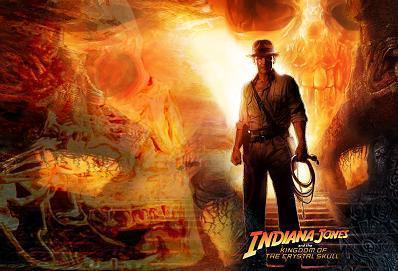If you’re a history buff and you’ve got HBO, then have I got a movie for you: Into the Storm. (And if you’re cable-less, add it to your NetFlix queue.) Yes, it’s made-for-HBO, but it’s from the John Adams/Band of Brothers wing, not the Recount/Angels in America department.
It’s a sequel of sorts to The Gathering Storm, known informally around my home as the Greatest Churchill Movie Ever Made. And in answer to the first question on your mind right now, no, the new HBO/BBC co-production is not quite as good as Gathering Storm. (But then, we just have to resign ourselves to the fact that nothing ever will be.)
Partly it’s Albert Finney’s fault. They say nobody’s perfect, but they haven’t seen Finney play Winston Churchill. (He most deservedly won both an Emmy and a BAFTA.) You’ve heard the phrase “tears of joy”? A largely alien experience to me, a pretty stoic, manly guy. Alien to me no more, my friends, once I watched Gathering Storm for the first time.
I regret to report that Brendan Gleeson, who essays the role in the sequel, gives it a yeoman’s try, but can’t quite measure up. There are simply more and richer layers to Finney’s performance, perhaps due to nothing no less unfair than a longer and more experienced life, even (dare I say it, oh what the hell) more talent. Janet McTeer, who plays wife Clemmie in the new movie, fares better, nearly matching Vanessa Redgrave’s marvelous performance in Gathering Storm. (Why, they even look alike.)
Into the Storm tells the story of Churchill’s personal life and struggles during World War II. Perhaps the best moments surround the genesis of some of his most famous war speeches, snatches of which we are privileged to hear. The film also portrays Churchill’s wooing of Franklin Roosevelt and Josef Stalin and the shifting dynamic between the three world leaders. And it swoops in and out of such meaty moments as the evacuation of Dunkirk, the debate over suing for peace, the Battle of Britain, and the D-Day invasion.
As you can probably sense by now, the movie’s brazen ambition is its Achilles heel, as it attempts to cover far too much ground in less than two hours. It threatens to devolve into a greatest-hits medley of World War II, dangerously close to eliciting that story note every screenwriter dreads – “it’s episodic.” (Interestingly, the screenwriter, Hugh Whitemore, is the same for both films.)
The film tries to stitch these moments together with a frame tale involving Churchill and his wife waiting for the results of his re-election bid following the war. But it’s more distracting than helpful (except for the truly moving final scene — wait for it, you’ll be glad). It’s sometimes difficult to figure out what time period we’re in, mixing flashbacks into a breakneck race through five of the most eventful years in history. Perhaps the filmmakers would have been better served if they zeroed in on one major event or turning point instead of trying to have it all.
After the guns were silenced, Churchill penned a massive six-volume history of the Second World War. Gathering Storm was based in part on the first (and eponymous) volume of that classic series. Into the Storm skims through the other five volumes in the same amount of playing time. HBO needed more than 11 hours to get the Band of Brothers from Camp Toccoa, Georgia to Berchtesgaden, Germany. Surely Churchill’s leadership throughout the entire war deserves its own mini-series, too. (What do you say, HBO, huh?)
The Gathering Storm wisely concentrated on a key but less scrutinized part of Churchill’s life: his quixotic struggle in the 1930s to alert Britain, still reeling from the First World War’s horrors, to the growing menace of Hitler’s Germany. It also more organically wove his family life with the relatively focused plot. The relationship between Winston and Clemmie, for instance, was far more developed in the prequel, and the film was better for it.
The parallels of Finney’s movie (released in 2002) to our then-contemporaneous debate over the Iraq War are unmistakable. Sometimes I think the best movies made about the war on terror were Gathering Storm and The Lord of the Rings: The Two Towers (2002 too, oddly enough).
I sincerely hope my paeans to Gathering Storm haven’t at all discouraged you from catching Into the Storm. (Yes, all this “Storm” talk is making my head spin, and it’s beginning to make my bad knee ache too.) I’m sure I’m being unfair to the upstart Storm, since I’ve watched its predecessor so much. In time I may grow to love the sequel just as much. After all, it’s an era of hope and change, or so I hear.
In any event, if you have any interest in World War II history, you truly won’t want to miss it. While not quite HBO’s finest hour, Into the Storm is a very good 100 minutes.
While we’re on the general subject, I’d like to mention a recent documentary mini-series that came and went on PBS last month, World War II: Behind Closed Doors. It focuses on the relationship between Churchill, FDR, and Stalin. But it also extensively covers the Katyn Forest massacre and other atrocities committed by the Soviets.
My jaw dropped as I realized that a PBS program – PBS! – was actually spotlighting the duplicity and brutality of the Soviets. The Nazis weren’t the only evil stalking Europe during the ’40s. I never thought I’d see the day when the mainstream media would begin to acknowledge the horrors inflicted by the Soviet Communists on Poland (while the other allies looked away, to their eternal shame). Watch these programs if they’re re-run on your local PBS station, or rent or buy the DVDs.

COMMENTS
Please let us know if you're having issues with commenting.